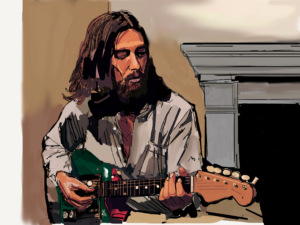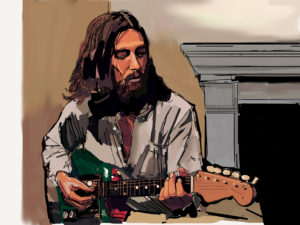Podcast: Play in new window | Download
Hired as a tape op by EMI in February 1970, Leckie quickly found himself among rock royalty when his career began with work on Ringo’s Sentimental Journey, followed quickly after with McCartney. But his major immersion with the cream of rock’s musicians soon came with the All Things Must Pass project, placing him at the service of George Harrison and Phil Spector and with a team that included Ringo, Klaus Voormann, Eric Clapton, The Dominoes, Gary Brooker, Peter Frampton, Phil Collins, Gary Wright, Billy Preston and Badfinger, among others.
This conversation focuses on that landmark album. Joining as co-host is author/producer Jerry Hammack (The Beatles Recording Reference Manual series), with a cameo from Luther Russell. Jerry’s latest book has just been published: Home Studio Recording – The Complete Guide.
John was a previous guest discussing the making of John and Yoko’s respective Plastic Ono Band albums, as well as alongside his previous collaborators Derek Forbes (Simple Minds) and Ian McNabb (Icicle Works) for a conversation on Peter Jackson’s Get Back film. His excellent recall of events he witnessed as well as insights as someone with some amazing career achievements (Roy Harper, Be Bop Deluxe, Pink Floyd, Wings, Radiohead, XTC, Stone Roses, and so on) to his credit make this conversation something special.




Fantastic interview. Absolutely loved this episode. Where can read this so-called Phil Spector letter?
Insightful commentary. I enjoy hearing the backstory of well-known albums from “those who were there”, as they say. Also, it was interesting to hear about the different ways that the four ex-Beatles liked to work. I’d hear on other podcasts how John Lennon liked to do things very quickly, whereas with George Harrison, it was a much more relaxed atmosphere in the studio. Hearing George and company play “Rockin’ Chair Blues” at the end was a surprise. The melody to that song, by the way, is the same as “Hobo Bill’s Last Ride”, and both recordings were released in 1929.
Thanks for identifying that song, Christopher. I don’t think I’ve heard it before.